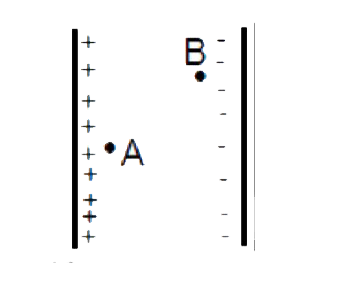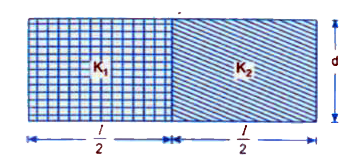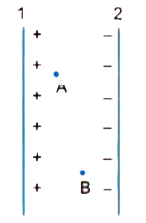Two protons A and B are placed in between the two plates of a parallel plate capacitor charged to a potential difference V as shown in the figure. The forces on the two protons are identical.

True is because two parallel plates is uniform , charge on each proton is same . Therefore, force on each proton is same.
Similar Questions
Knowledge Check
Force of attraction between the plates of a parallel plate capacitor is
Aq22ε0AKBq2ε0AKCq2ε0ADq22ε0A2KA proton is first placed at A and then at B between the two plates of a parallel plate capacitor charged to a P.D. of V volt as shown. Then force on proton at A is -
 Amore than at BBless then at BCequal to that at BDnothing can be said
Amore than at BBless then at BCequal to that at BDnothing can be saidIf a thin metal foil of same area is placed between the two plates of a parallel plate capacitor of capacitance C, then new capacitance will be
ACB2CC3CD4C
Two identical positively charged particles P and Q are placed between two parallel paltes having a potential difference of V volts between them as shown in the figure. Which of them will experience larger force?

View SolutionHow will the voltage (V) between the two plates of a parallel plate capacitor depend on the distance (d) between the plates, if the charge on the capacitor remains the same?
View SolutionTwo dielectric slabs of dielectric constants K1andK2 are filled in between the two plates, each of area A, of the parallel plate capacitor as shown in the figure. Find the net capacitance of the capacitor.

View SolutionWhen a metal slab is placed between the charged identical , parallel plates , the potential difference between the plates
View SolutionThe separation between the plates of a charged parallel-plate capacitor is increased. The force between the plates
View Solution

